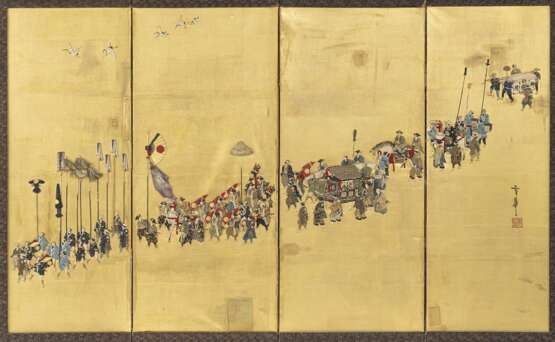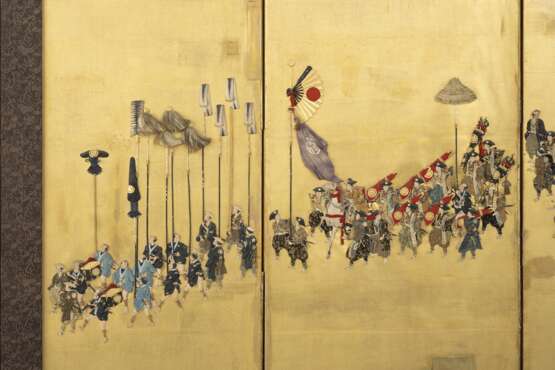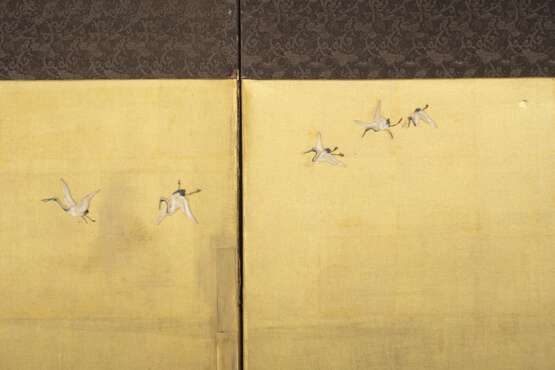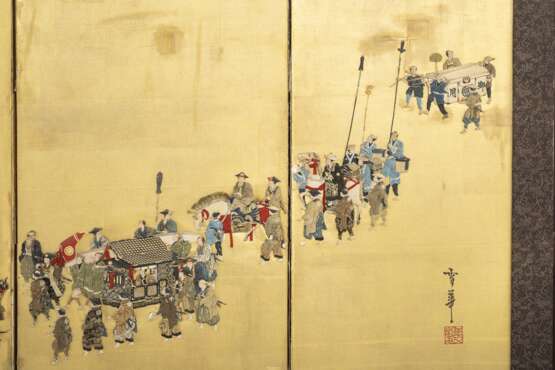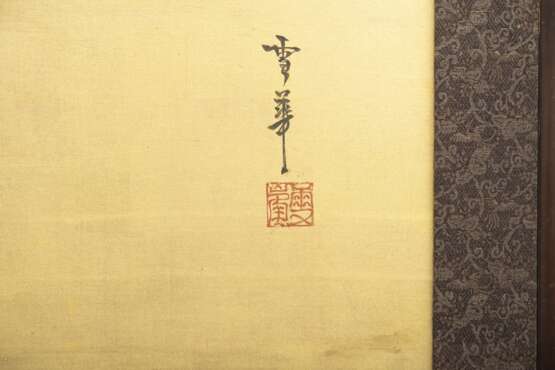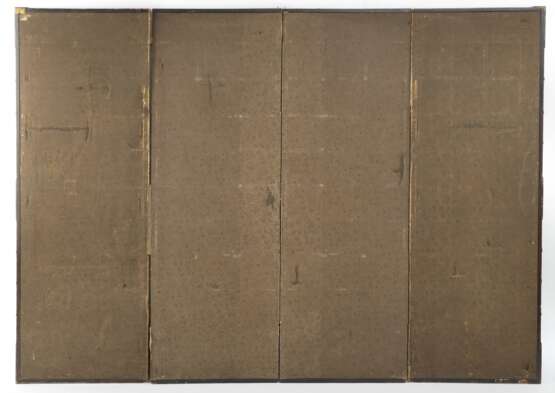ID 1217697
Lot 1173 | Vierteiliger Stellschirm in Oshie-Technik
Estimate value
€ 1 200 – 1 800
171,5 x 236 cm
Dargestellt wird ein daimyô-Zug, der sich über alle vier Paneele in einer langen Prozession erstreckt. Zu sehen ist zahlreiches Fußvolk, teils auch Reiter hoch zu Ross sowie Standartenträger, die u.a. Fahnen mit dem Tokugawa-Wappen und einen Fächer mit dem Symbol der Sonne, das für Glück und Wohlstand zählt, tragen. Auf dem zweiten Paneel rechts, wird eine prächtige Sänfte dargestellt, die von Gefolgschaft umgeben und getragen wird. Durch ein Fenster wird der Herrscher sichtbar. Seidenapplikationen und Malerei auf goldenem Grund.
Aus einer deutschen Privatsammlung, erworben vor 2007 - Altersspuren, partiell kleine Besch. und rest.
Oshie (wörtlich: gepresste Bilder) sind Reliefbilder. Hierbei werden die Bestandteile des Bildes aus Pappe ausgeschnitten, mit Baumwolle ‚gefüttert‘ und mit Stoff bespannt. Anschließend werden sie zu einem Bild zusammengefügt und auf einer Unterlage befestigt. Oshie wurden seit der Muromachi-Zeit hergestellt. Die Ausführung galt als weibliche Beschäftigung - wie beispielsweise Ikebana. In der Meiji-Zeit nahm dieses Handwerk einen neuen Aufschwung. Kunsthandwerker wie Katsu Bunsai (1835-1903) waren mit großen oshie-Arbeiten erzählerischen Inhalts auf der nationalen Industrieausstellung von 1877 vertreten. In Kyoto waren Tanaka Rihei und sein Sohn Rishichi (1847-1902) ab ca. 1860 als Händler und Agenten für gestickte Stellschirme, fukusa (Geschenktücher) und oshie-Arbeiten tätig. Ihr Geschäft befand sich auf der Karasumaru-dôri, Ecke Shichijô. Die von ihnen angebotenen oshie waren mit Signatur und Siegel „Seppô“ versehen, die in der Art einer Malersignatur angebracht war. Es gibt keinerlei biographische Angaben zu Seppô, aber von diesem oshie-Meister sind mehrere hochaufwändige Arbeiten bekannt. Dabei handelt es sich um historische Szenen, daimyô-Züge oder Darstellungen von Handwerkern auf Paneelen, die meist zu Stellschirmen zusammengesetzt waren.
Vgl. die Arbeit von Seppô im Ashmolean Museum in Oxford und eine in Privatbesitz, abgebildet in: H. T. McDermott und Clare Pollard, Threads of Silk and Gold, Ornamental Textiles from Meiji Japan, Oxford 2012, S. 178-185.
| Auction house category: | Japanese art |
|---|
| Auction house category: | Japanese art |
|---|
| Address of auction |
Nagel Auktionen GmbH Neckarstrasse 189 - 191 70190 Stuttgart Germany | ||||||||||||||
|---|---|---|---|---|---|---|---|---|---|---|---|---|---|---|---|
| Preview | |||||||||||||||
| Phone | +49 (0)711 649 690 | ||||||||||||||
| Fax | +49 (0)711 649 69696 | ||||||||||||||
| Buyer Premium | 29,5% | ||||||||||||||
| Conditions of purchase | Conditions of purchase | ||||||||||||||
| Business hours | Business hours
|
